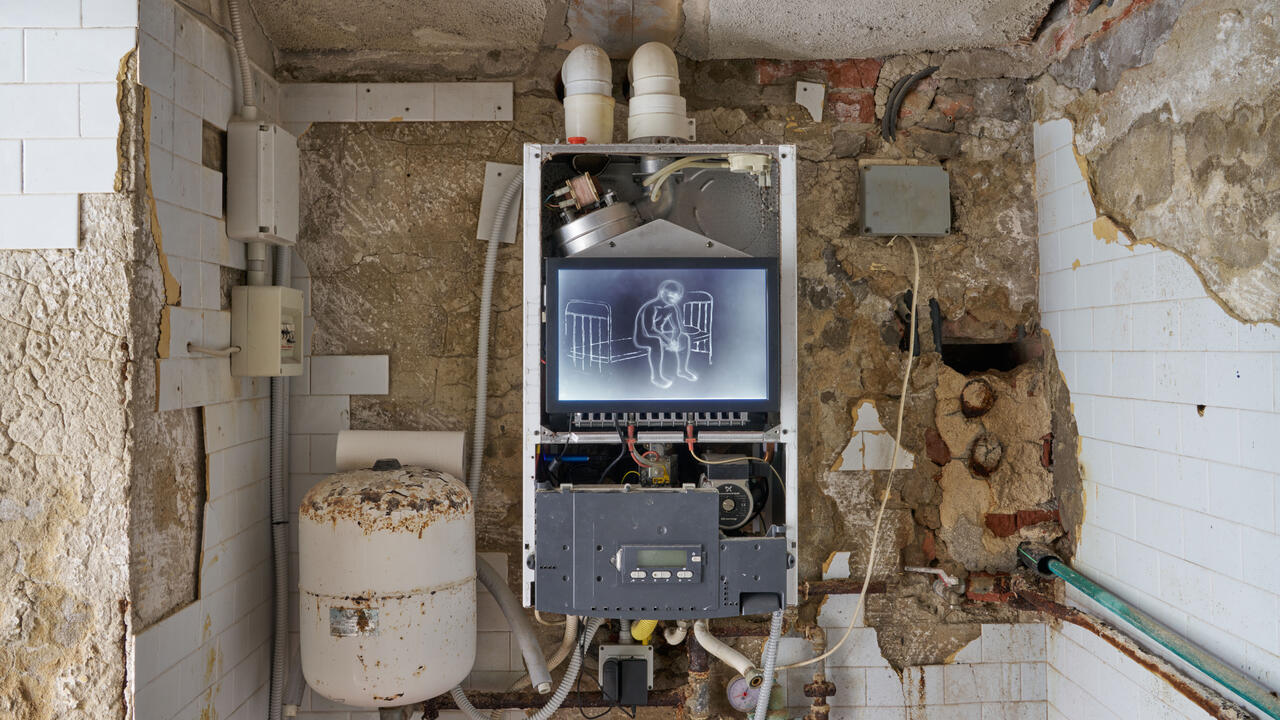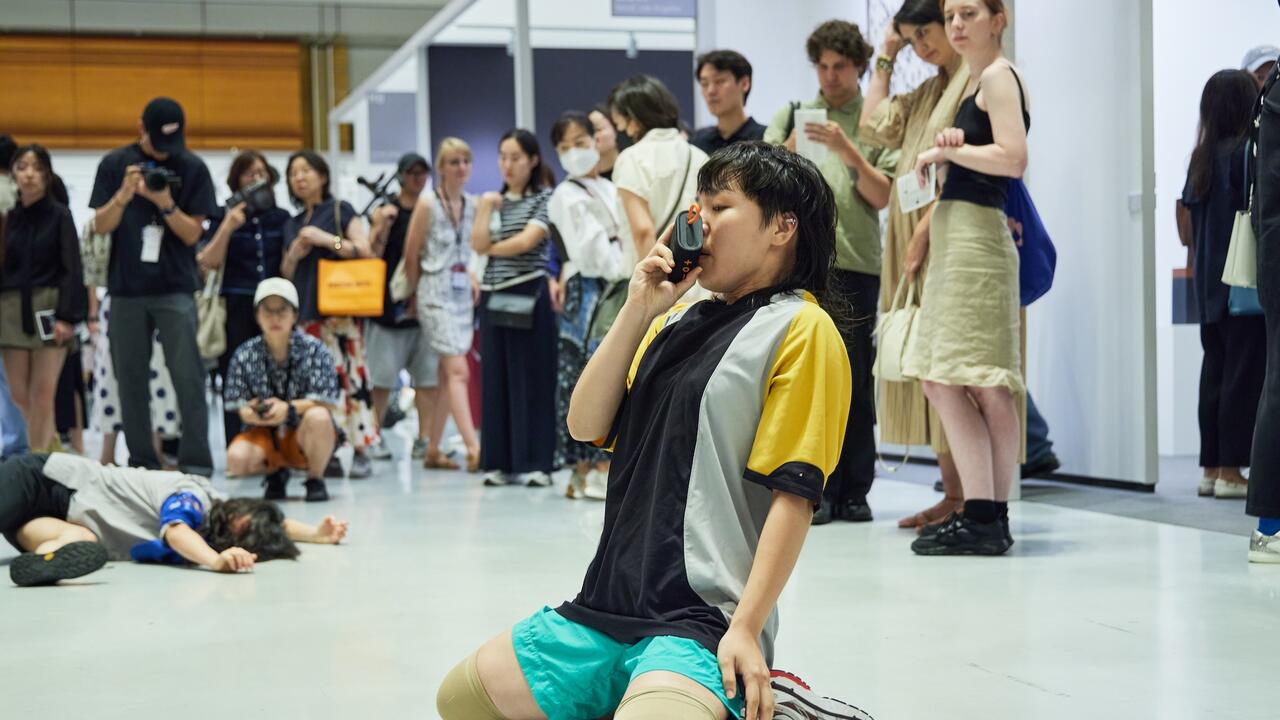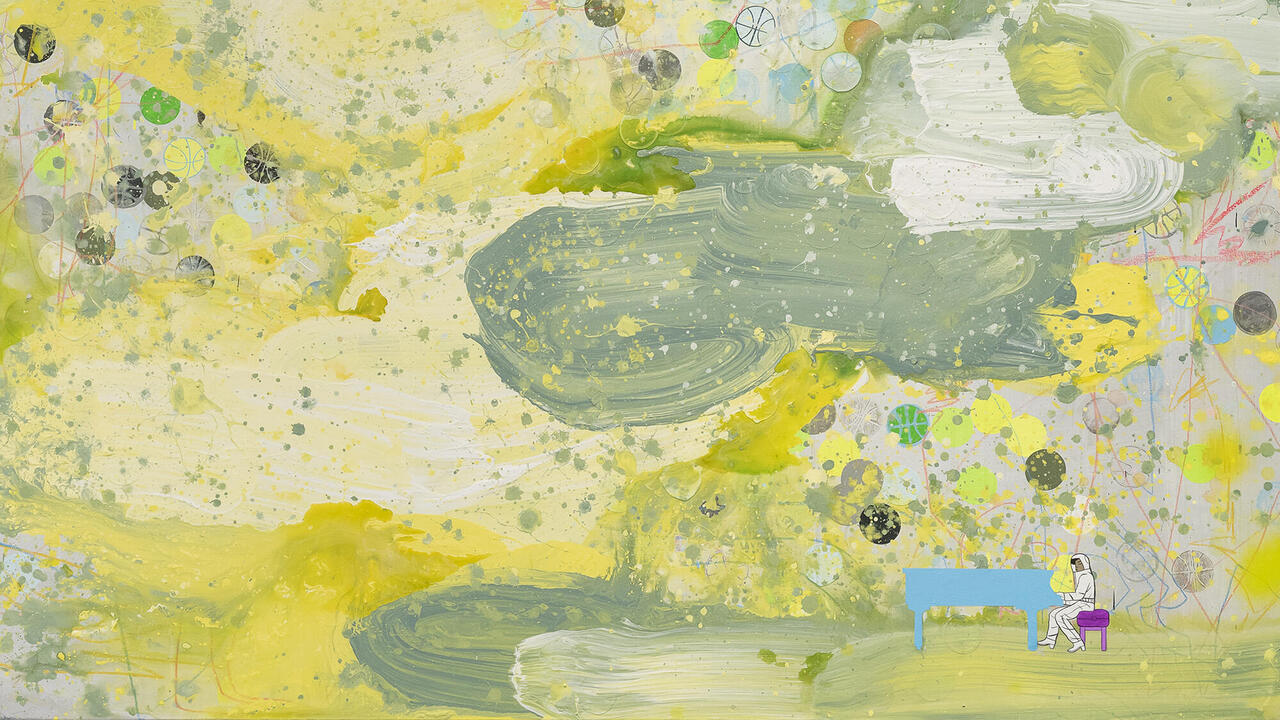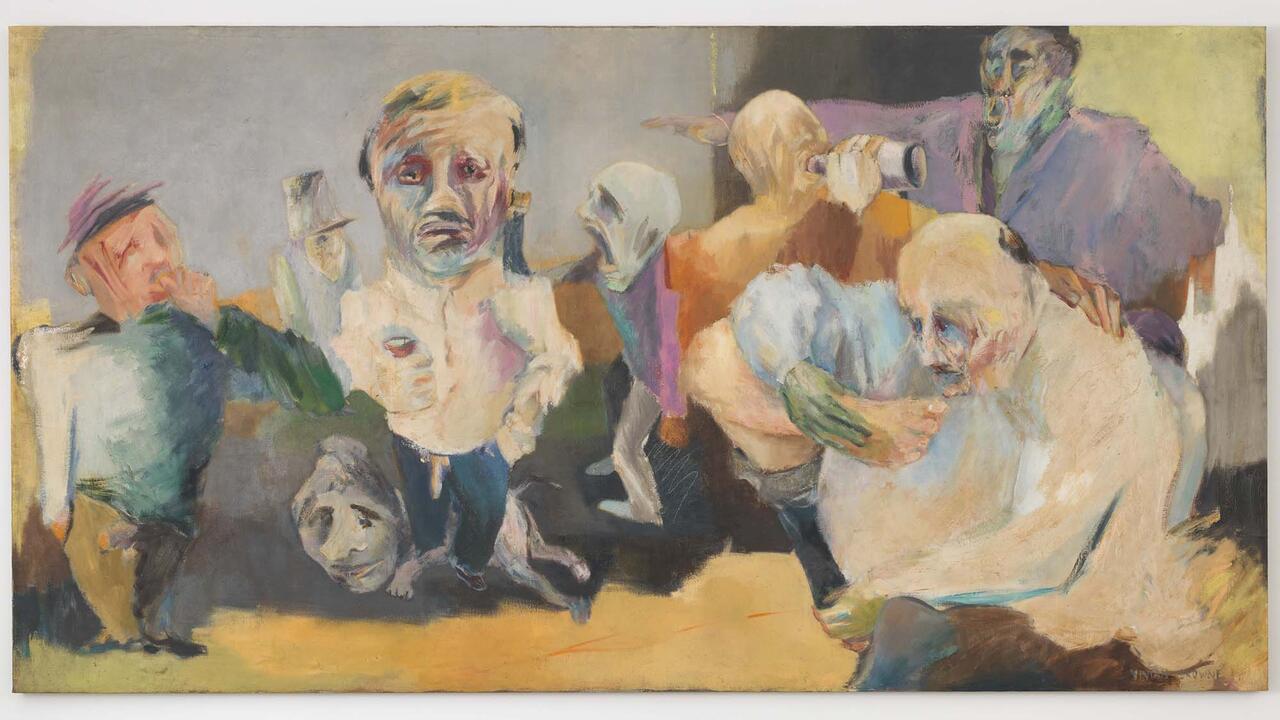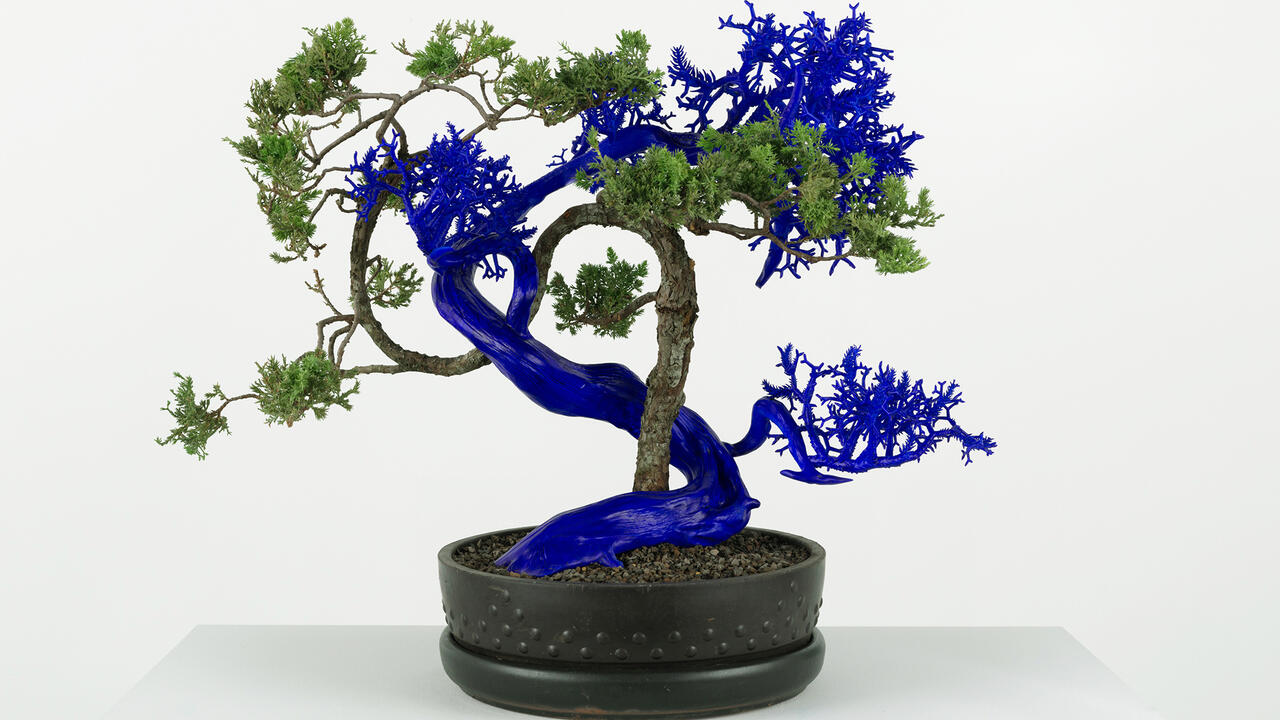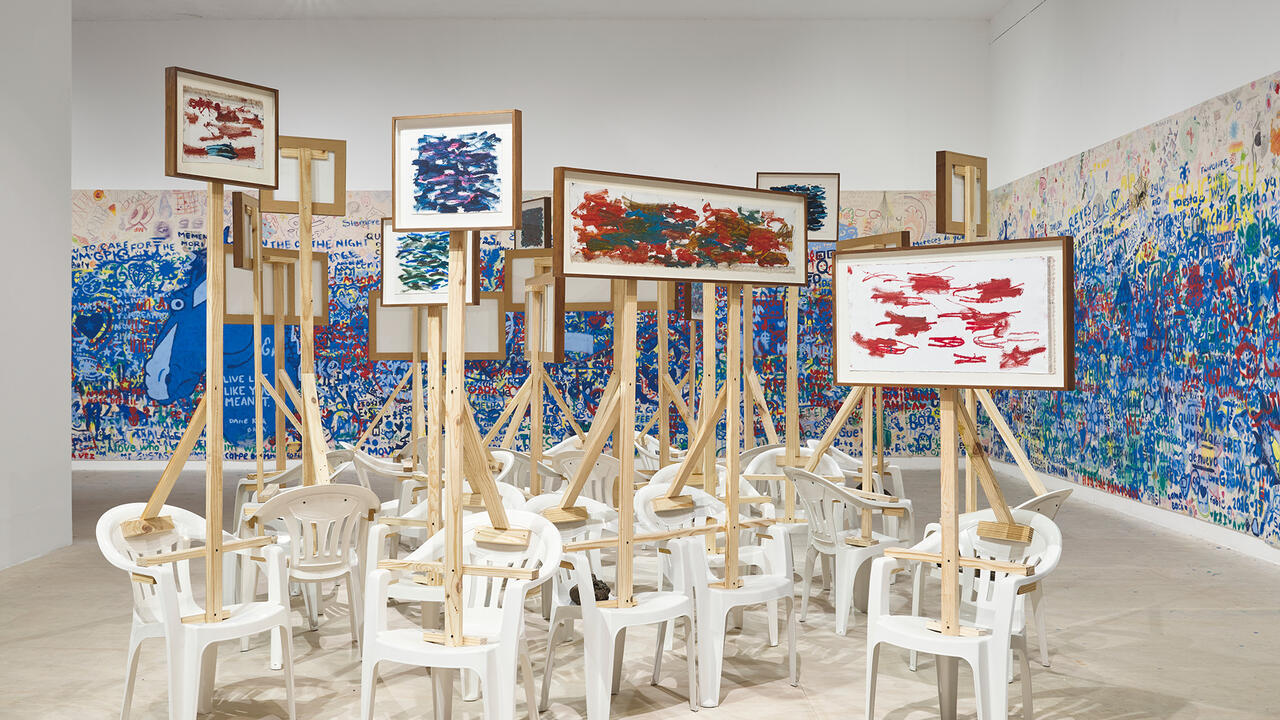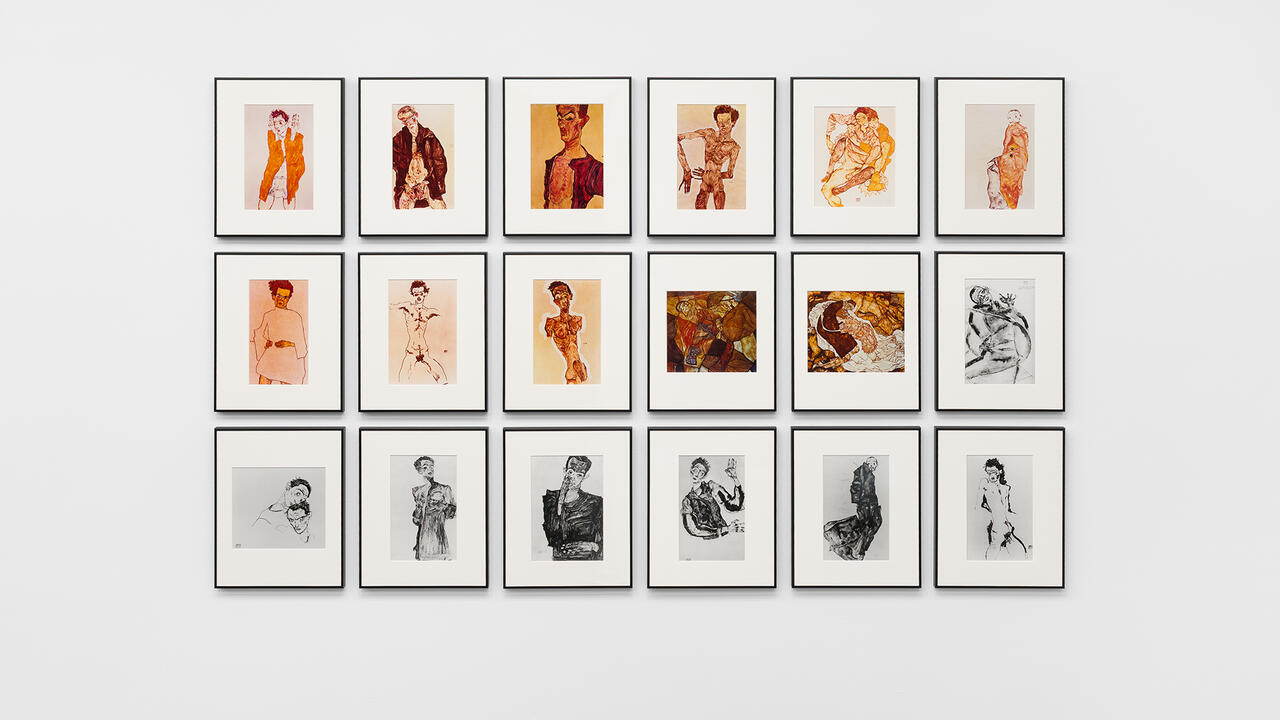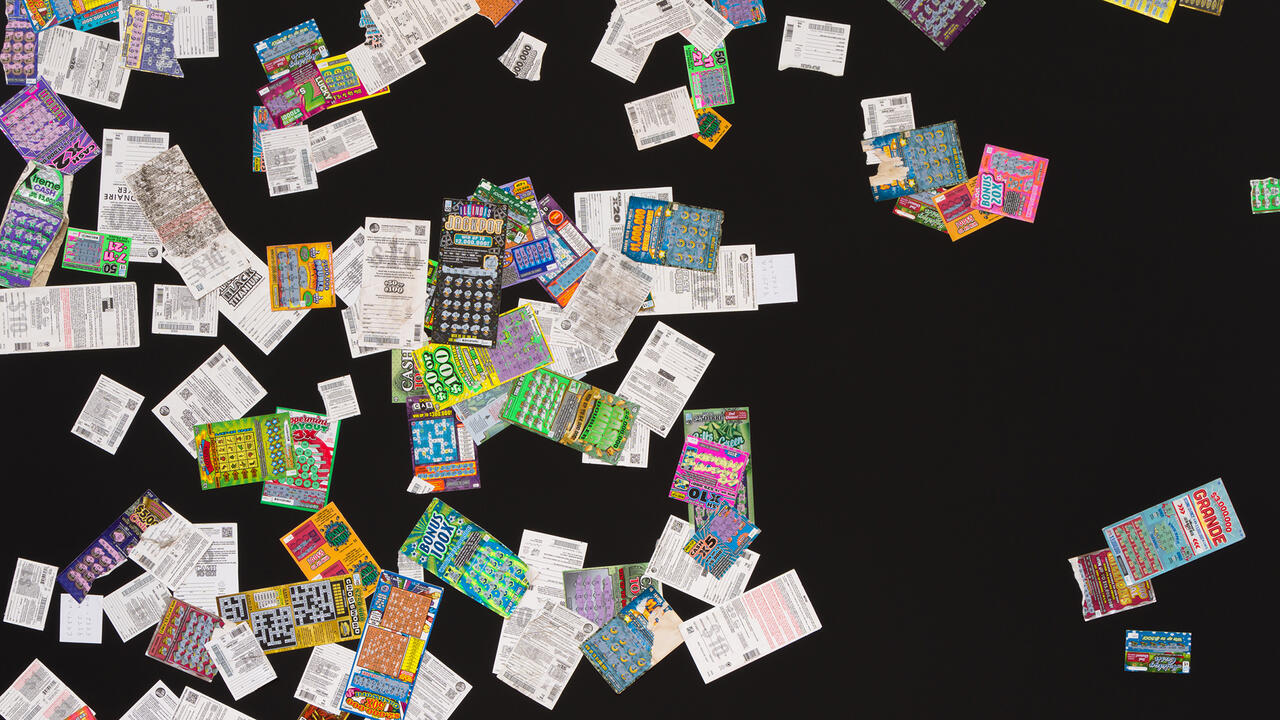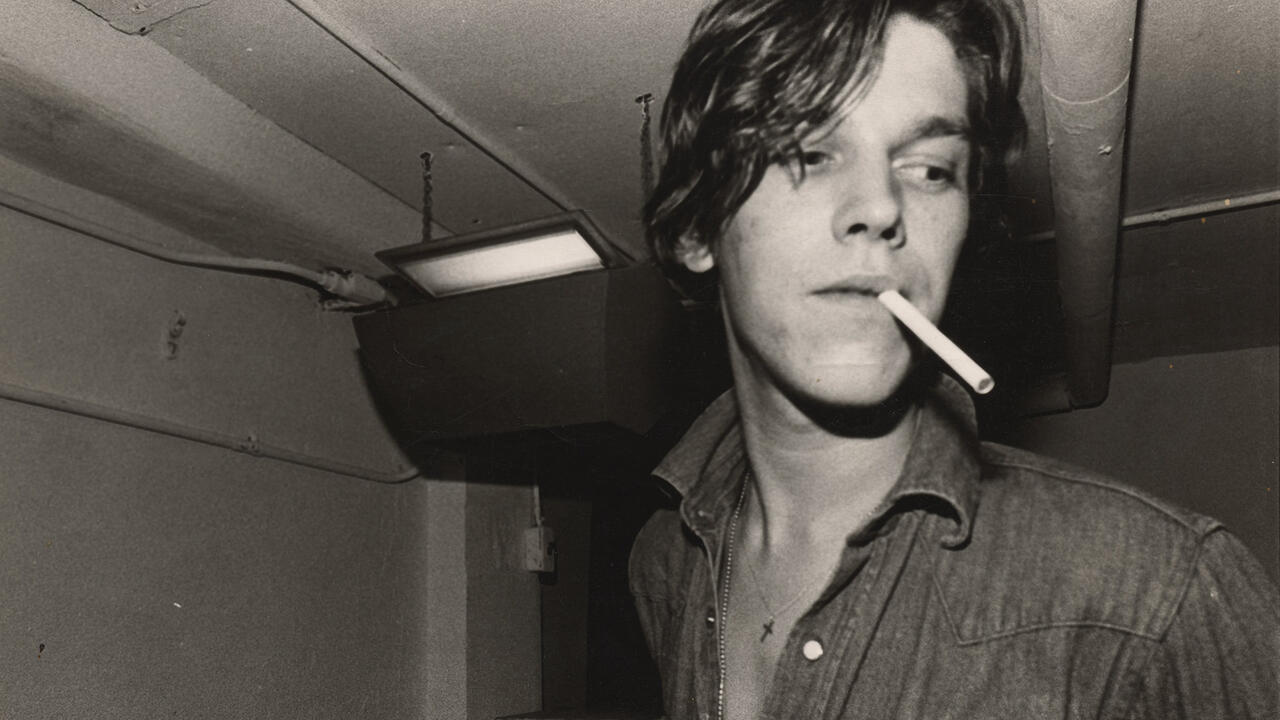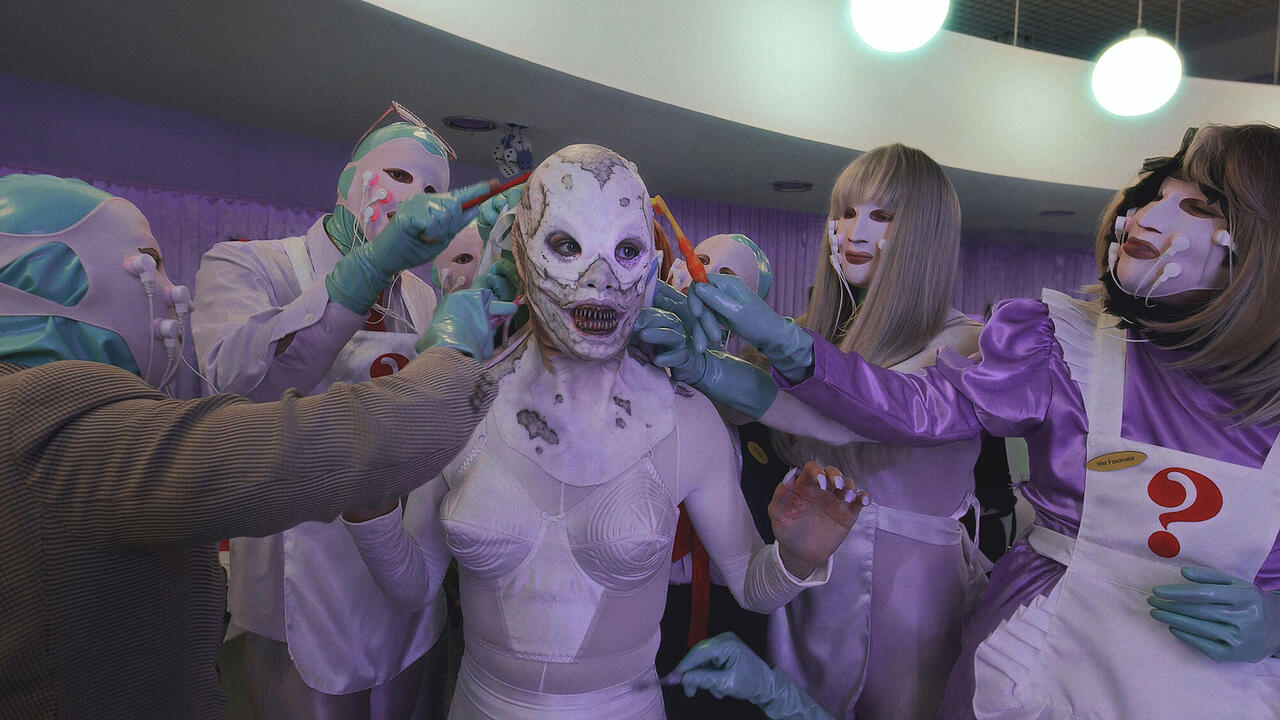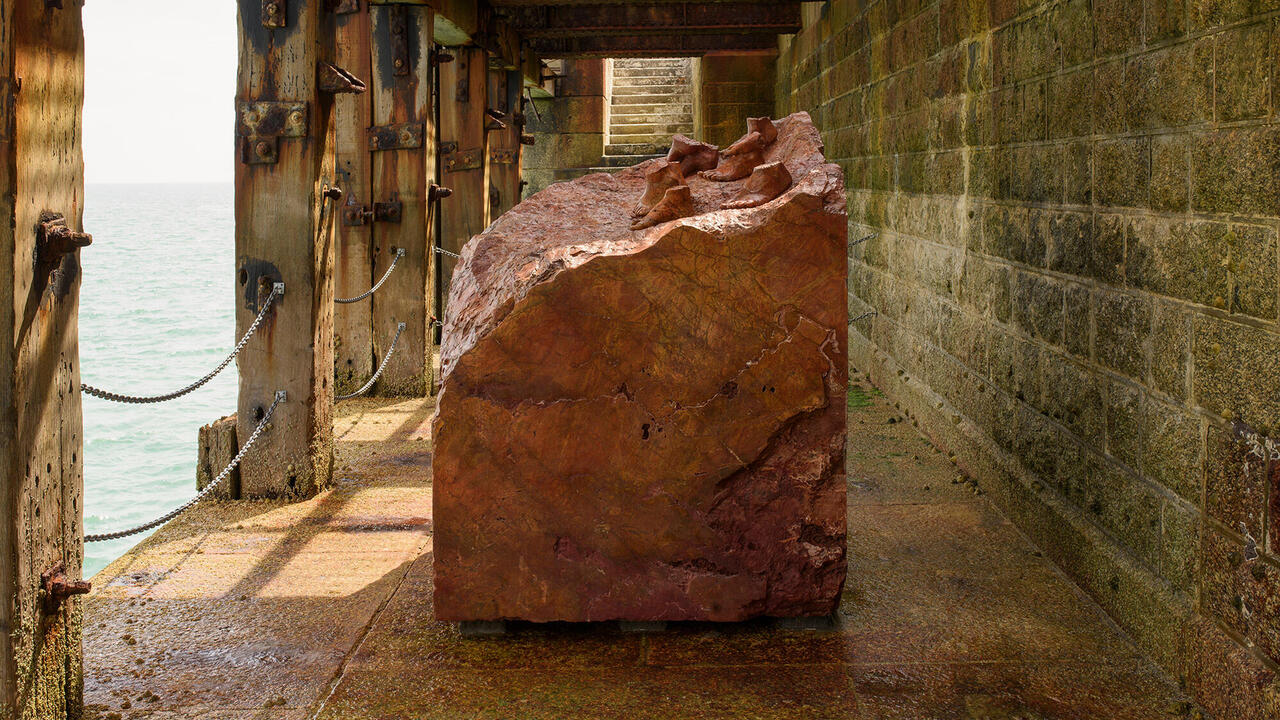Tau Lewis Assembles Aliens, Guardians and Spirits
At Institute of Contemporary Art / Boston, the artist’s majestic figures powerfully embody the syncretism of the Caribbean despite a cramped presentation
At Institute of Contemporary Art / Boston, the artist’s majestic figures powerfully embody the syncretism of the Caribbean despite a cramped presentation

Entering the Fotene Demoulas Gallery at the Institute of Contemporary Art / Boston, viewers encounter a quintet of towering soft sculptures by Tau Lewis, a Toronto-born, Brooklyn-based artist of Jamaican descent. With names ranging from The Night Woman to The Reaper (all works 2024), these larger-than-life beings are composed of natural and manmade materials – as varied as goatskin, coral, gold thread and steel – collected by the proudly self-taught artist. Akin to these materials, the figures are hybrid, drawing upon an array of mythological and historical sources. What are these beings’ stories, and why have they landed here? The Last Transmission, a circular quilt in the room’s centre, may hint at their cosmology: mundane objects including house keys, seashells and silver spoons are overlaid on long strips of fabric, creating a pleasingly repetitive pattern. The quilt’s outermost circle evokes eyes of protection, a ward against those wishing to do harm – yet this work, like the entire exhibition, delightfully evades straightforward explanations.

For ‘Spirit Level’, Lewis’s first solo museum exhibition in the US, the artist debuts majestic figures, standing over three metres tall, that embody the syncretism of the Caribbean. Marine life multiplies and the ocean undulates on the sculptures’ large flowing robes, heads and exposed hands. Beyond their significance in populating the Caribbean Sea, these underwater creatures’ survival strategies of decoy, camouflage and attack have their analogues in the past, present and future manoeuvres of Black folks in diaspora. A jellyfish – a peaceful creature until goaded to strike – makes up the head and arms of The Miracle, powerful in its ability to both give and take away life.
The hand positions of each figure evoke religious and spiritual traditions that are more or less opaque depending on the viewer’s physical and cultural proximity to the source. The Handle of the Axe directly references Saint Benedict of Palermo (the first Christian saint of African descent) and Samuel Sharpe (an enslaved preacher who led Jamaica’s 1831–32 Christmas Rebellion). Its arms are held open in welcome or benediction, while other figures’ hands look to be clasped in prayer, raised in celebration, or poised in meditative mudras. In Lewis’s own hands, found objects are transformed into an anthropomorphic assembly of aliens, guardians and/or spirits – fittingly, as she described this exhibition in a recent New York Times profile as a form of ‘grief work’ made in the wake of her mother’s passing.

Cultural and personal references are quite literally woven into each figure’s body and garment, and reward sustained immersion in this undersea environment-turned-undercommons (following Fred Moten and Stefano Harney’s call for subterranean modes of refusal and resistance). Afrofuturism, Black liberation theology and cycles of nature all deeply inform ‘Spirit Level’, and offer intersecting pathways to recognize that birth, death and rebirth can be powerful acts of rebellion for captive and captured living beings. Sadly, the tight placement of the sculptures, which encircle the quilt on the floor, does not allow for a comfortable experience of dwelling alongside these densely encoded works. A step in any direction feels precarious, as you might trip over a long swath of fabric or bump into another viewer looking up at these monumental beings. The intimacy of the gallery becomes oppressive under such spatial constraints, and the funereal silence and gray walls of the room undercut The Last Transmission’s titular reference to Drexciya, the underground Detroit techno duo who sonically resurrected mythologies of an underwater civilization as a riotous mode of imagining Black liberation. My only hope is that the exhibition’s second iteration, in David Zwirner’s Los Angeles location, gives this labour of love the epic presentation it deserves.
‘Tau Lewis: Spirit Level’ is on view at the Institute of Contemporary Art / Boston until 20 January 2025
Main image: Tau Lewis, The Last Transmission (detail), 2024, recycled leather and suede; cotton canvas; acrylic paint and finisher; leather, fabric, and natural dyes; assorted found metal, wood, ceramic, and glass objects; wire; beads; seashells; coated nylon thread and coated cotton thread; approx. 6.1 metres diameter. Courtesy: the Institute of Contemporary Art / Boston; photograph: Mel Taing





